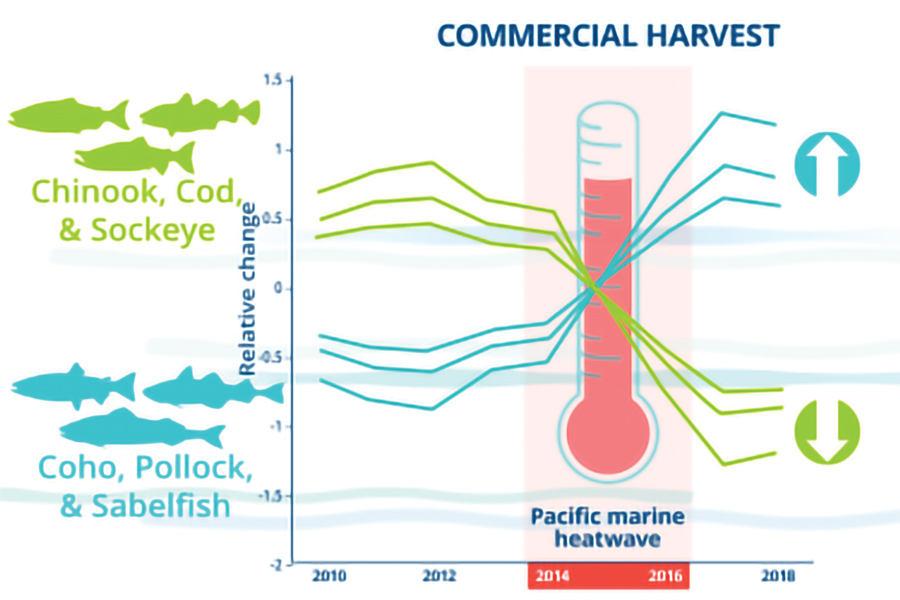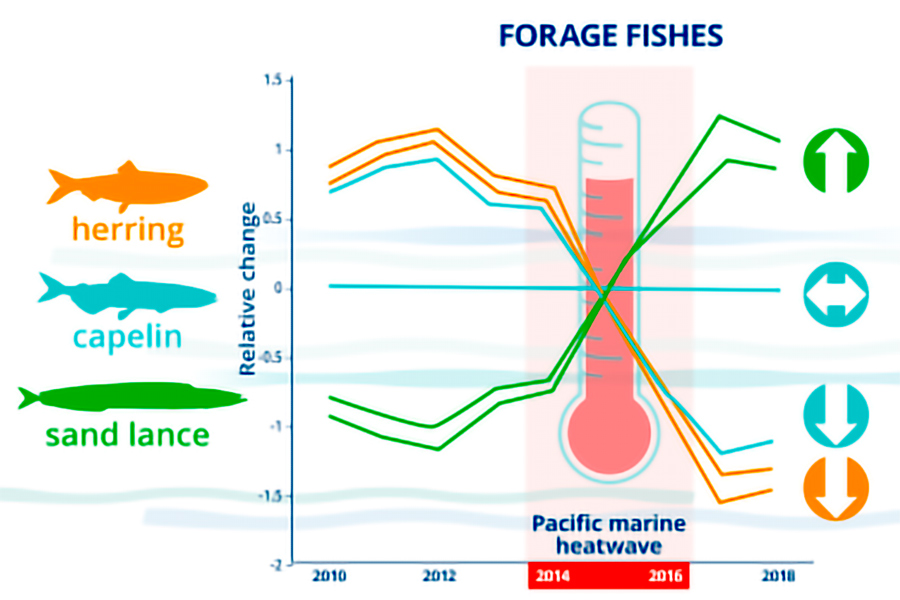hanges in temperature affect every environment, aiding or adversely affecting different flora and fauna within it. The Blob, a warm-water phenomenon off the coast of Alaska, was no exception. According to “Most Recent Data Shows Gulf of Alaska Marine Ecosystem Slow to Return to Pre-Heatwave State” by NOAA Fisheries, the “Pacific marine heatwave”—their much more scientific name for the Blob—had a negative effect on phytoplankton, intertidal organisms, forage fish, adult groundfish, and some commercial fish, “especially Pacific cod and sockeye salmon.” But other commercial fish had positive trends while the Blob set up shop in Alaska, including chum salmon, sablefish, coho salmon, and pollock.
The report states that phytoplankton bloom timing and size, forage fish growth and condition, and at-sea densities of highly mobile seabirds had no “detectable” response to the increased temperatures, but that lack of response to a large heatwave still provides “important information about resilience in the marine environment.”
Though the tendency may be to look at such data as good or bad, ultimately the data are beneficial. As the report states, “Understanding how marine ecosystems respond to cyclical, linear, or random environmental change, or their additive effects, is a key challenge in marine ecology and resource management.” ![]()

